Exceptional Collection of King Tut Items Up For Auction — Illuminating the Politically Fraught Backdrop of the Excavation with Howard Carter
FREE ESTIMATE. To auction, buy, consign or sell Howard Carter memorabilia, please email Nate at [email protected] or phone the Nate D. Sanders Auction House (http://www.NateDSanders.com) at (310) 440-2982.
Please let us know if you have Howard Carter memorabilia that is for sale. Top dollar obtained for your Howard Carter memorabilia.
Buried deep in the Valley of the Kings is a lesser-known story relating to the discovery of King Tut’s tomb, the only intact royal tomb in history – that of the behind-the-scenes clashing between various factions – Howard Carter, the archaeologists, conservationists, Egyptian government officials, and on, and on.
What started as an archaeological adventure quickly turned political, legal, even nasty.
The treasures in King Tut’s tomb quickly became a matter of ownership. Some factions considered every single item of discovery as part of one unit, while others considered each item ostensibly up for grabs.
The media frenzy of course contributed to the conflict – between fears of looters and the “Curse of the Pharaohs,” journalists only wanted more access the more they were denied it as the excavation progressed — as did the rest of the world.
King Tut’s sarcophagus to this day remains in the exact location it was discovered, though the tomb itself has long-since been emptied with incredible artifacts and marvels on display in museums around the world.
We are proud to announce in our August auction an incredible assortment of items shining light on the political backdrop of the excavation of King Tut’s tomb.
Each items comes from one of the various major players in the conflict over the years, and each letter, telegram or document references the impassioned viewpoints of those players who had access – or desperately wanted access – to King Tut’s tomb.
The letters and documents in the auction are dated 1922-24, arguably the most interesting period during the excavation, save for one earlier document. The years of 1922-24 were exceedingly fraught as each faction had a personal stake – for the Egyptian government, it was to prevent a sense of Western colonization upon their land’s treasures, particularly post-WWI as the country’s nationalism was increasing.
On 16 February 1923 the burial chamber was opened —
Howard Carter
Highlighting the collection is this exceedingly rare telegram sent by English Egyptologist Howard Carter, the famed discoverer of King Tut’s tomb, sent just two weeks after it was opened.
“Urgent” Telegram Pertaining to King Tut’s Tomb, Sent by Lead Excavator Howard Carter in 1923 — “Arrangements have been made to close the tomb on Monday…”
The telegram is addressed to Abdul Hamid Soleman Pasha, minister of Public Works in Cairo, and was written from the excavation of KV62, King Tut’s tomb. The telegram is stated “urgent” as the matter of allowing the public access to the tomb became a tense issue between Carter and his peers and the Egyptian government. The telegram originates in the office at Luxor and date stamp indicates February of 1923, and in the text Carter mentions Monday the 26th; indeed in February of 1923 the 26th was a Monday.
Content reads in full, “arrangements have been made to close the tomb on Monday 26. please arrange for Saturday or Sunday [illegible]“.
Carter pushed for the closing of the tomb to prevent journalists and tourists from overrunning the excavation, which he knew would take years. Yet at the same time, allowed people he saw fit access.
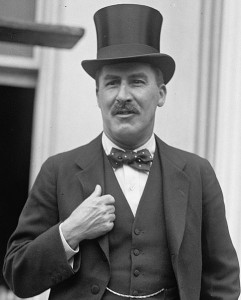
Under the terms, if the site contained an intact Pharaoh’s tomb its contents would have to revert back to the Egyptian Government but Carter would be allowed to continue with excavation. But For Carter and the British team, including Lord Carnavon, who funded the lengthy excavation – they felt that since they were the discoverers of the tomb it was therefore their right to proceed, more or less, as they wished.
Lord Carnarvon:
This incensed other players and the real conflict quickly became evident between two men: Carter and Pierre Lacau, who was Director General of Antiquities, himself a French Egyptologist-turned-bureaucrat who served as a liaison to the Egyptian government often as an intermediary.
Disdain continued to grow — especially as it took 8 years to remove all of the treasures from the tomb.
Earlier that year, Lacau wrote the following typed letter signed discussing his staunchly opinionated opposition, mostly, to Carter’s proceedings.
Included in the auction is this Typed Letter Signed by Lacau Regarding the Excavation of King Tut’s Tomb in 1923
Written in French upon his official stationery and dated 27 January 1923, letter is addressed to “Mr. Under Secretary of State” and is signed “P. Lacau”. Letter is partially untranslated and mentions “the mummy”, referring to King Tut, and also “Tout Ankh Amon”. It continues that the mummy cannot stay where it was found in the sarcophagus. Content also refers to the Egyptian government’s limiting of visitors to the tomb, “…so work can go quickly and well…” It additionally references Amenophis II, another pharaoh who was buried in the Valley of the Kings.
The contentious letter also exemplifies the fraught relationship between Lacau and Carter — Lacau mention’s Carter’s name twice in the letter, as well as his entire excavation team, noting that too many visits, even by high dignitaries, would be cumbersome and “visitors would hunt [the items] even if they were high functionaries.”
He also says, in a paraphrased translation, “how can anyone think that it is not necessary for the safeguard these treasures. It would be ridiculous in the eyes of all.”
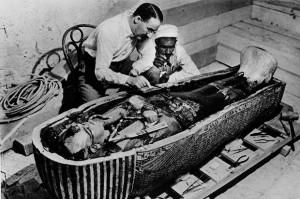
In an incredible back-and-forth, new rules were imposed by Lacau, some which Carter blatantly disregarded, others which seemed personally aimed at Carter by Lacau to dismantle his progress.
Later, when Lacau banned nearly everyone from visiting the tomb, including the wives of the team, Carter took offense, temporarily abandoning the excavation.
According to author T.G.H. James, author of “Howard Carter: The Path to Tutankhamun,” the tension between the two men unhinged Carter to the point where he halted his life’s work as emotions and fervor ran too high.
A 7 Feb 1924 diary entry portrays the conflict between the two men from the perspective of Carter. Here, the men are forced to meet in person:
“I immediately brought up the question of the opening of the sarcophagus…Lacau immediately referred to past events and said that I was guilty of taking into the tomb a great number of visitors – I answered ‘let us stick to facts’ I haven’t taken in one twentieth of the number the government had invited, to which remark Tottenham agreed.”
One week later, on 12 February 1924, the granite lid of the sarcophagus was raised.
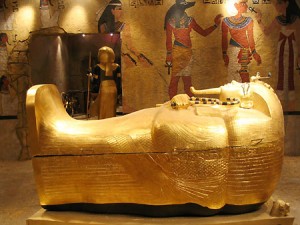
The issue of who was permitted in the tomb over the course of the excavation continued to be a source of conflict and the U.S. wanted access for VIP government officials, as this letter illuminates.
On 18 January 1924, the following typed letter from the Legation of the United States of America was sent to an Egyptian government official, Hamid Soliman Pasha, Minister of Public Works, regarding King Tut’s tomb.
1924 Letter Regarding King Tut’s Tomb — The U.S. Government Writes “…Rumors are…the tomb of Tut-ankh-amen will be open for inspection of tourists…”
The diplomat who writes the letter asks for access to the tomb for a VIP list including several U.S. Congresspeople and their guests, and not so subtly stresses the critical nature of U.S. tourism to Egypt.
Reads in part, “Excellency: Rumors are current that on a certain day of each week the tomb of Tut-ankh-amen will be open for inspection of tourists traveling in Egypt, who are sufficiently important to be recommended by their respective Legations. I have refrained from troubling your excellency with the many requests which have come to me from Americans visiting Egypt, for permission to visit this famous tomb, asking admission only for those connected with newspapers and magazines, but if the above mentioned rumor is true, or it is possible to enter the tomb of Tut-ankh-amen, I should be grateful if permission might be given to the following persons: Hon. Frederick Hicks, ex-congressman…”
We also have a second 1924 letter pertaining to a journalist’s request to own a piece of the tomb’s stone.
1924 Letter Signed From the Egyptian Government — ”…stone from king Tout-Ankh-Amoun’s tomb…a crypt cut out in the rock…”
An Egyptian official responds to an inquiry from a “Chicago Tribune” correspondent asking for a piece of the tomb’s stone in this typed letter signed from Egypt’s Under Secretary of State pertaining to King Tut’s tomb.
It reads in part, “Sir: With reference to your letter addressed to H. E. the Minister dated March 13th, 1924 asking whether it would be possible to secure a stone from king Tout-Ankh-Amoun’s tomb for incorporation in the new Tribune’s building in Chicago, I have the honour to inform you the tomb in question is not a building but, in reality, a crypt cut out in the rock and it is not possible to take off any part of its rocky wall. This Ministry therefore regrets very much its being unable to comply with your request…”
Lastly, we have a much earlier pre-WWI letter written by another leading Egyptologist, James Quibell. In 1898 he was made an inspector of the Antiquities Service for the Delta and Middle Egyptian regions. Letter is dated 1906, the year after his landmark discovery of the matrimonial tomb of Yuya and Tjuyu in the Valley of the Kings.
Valley of the Kings Egyptologist James E. Quibell Autograph Letter Signed From 1906 — ”…that I may be granted 3 1/2 months leave to be spent out of Egypt…”
Reads in part, “To the Director General, Dear Sir…I have the honor to ask that I may be granted 3 1/2 months leave to be spent out of Egypt…J.E. Quibell”.
Auction ends Thursday, August 28th at 5p.m. Be sure to check out this exceptional collection.
FREE ESTIMATE. To auction, buy, consign or sell Howard Carter memorabilia, please email Nate at [email protected] or phone the Nate D. Sanders Auction House (http://www.NateDSanders.com) at (310) 440-2982.
Please let us know if you have Howard Carter memorabilia that is for sale. Nate D. Sanders Auctions offers the following services for Howard Carter memorabilia:
- Appraise Howard Carter memorabilia
- Auction Howard Carter memorabilia
- Consign Howard Carter memorabilia
- Sell Howard Carter memorabilia
- Buy Howard Carter memorabilia
- Research Howard Carter memorabilia
- Authenticate Howard Carter memorabilia
- Howard Carter memorabilia prices realized
- Howard Carter memorabilia for sale
- Howard Carter memorabilia appraisal
- Howard Carter memorabilia auction
- Howard Carter memorabilia consignment
- Howard Carter memorabilia bought
- Howard Carter memorabilia sold
- Howard Carter memorabilia valuation
- Howard Carter memorabilia estimate
- Howard Carter memorabilia cost
- Howard Carter memorabilia researched
- Howard Carter memorabilia value


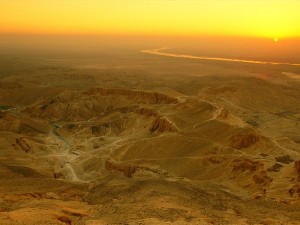

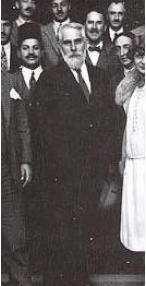
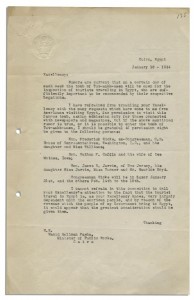
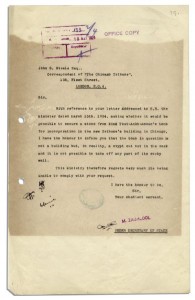
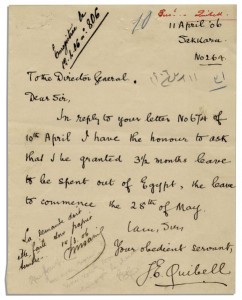
Comments are closed